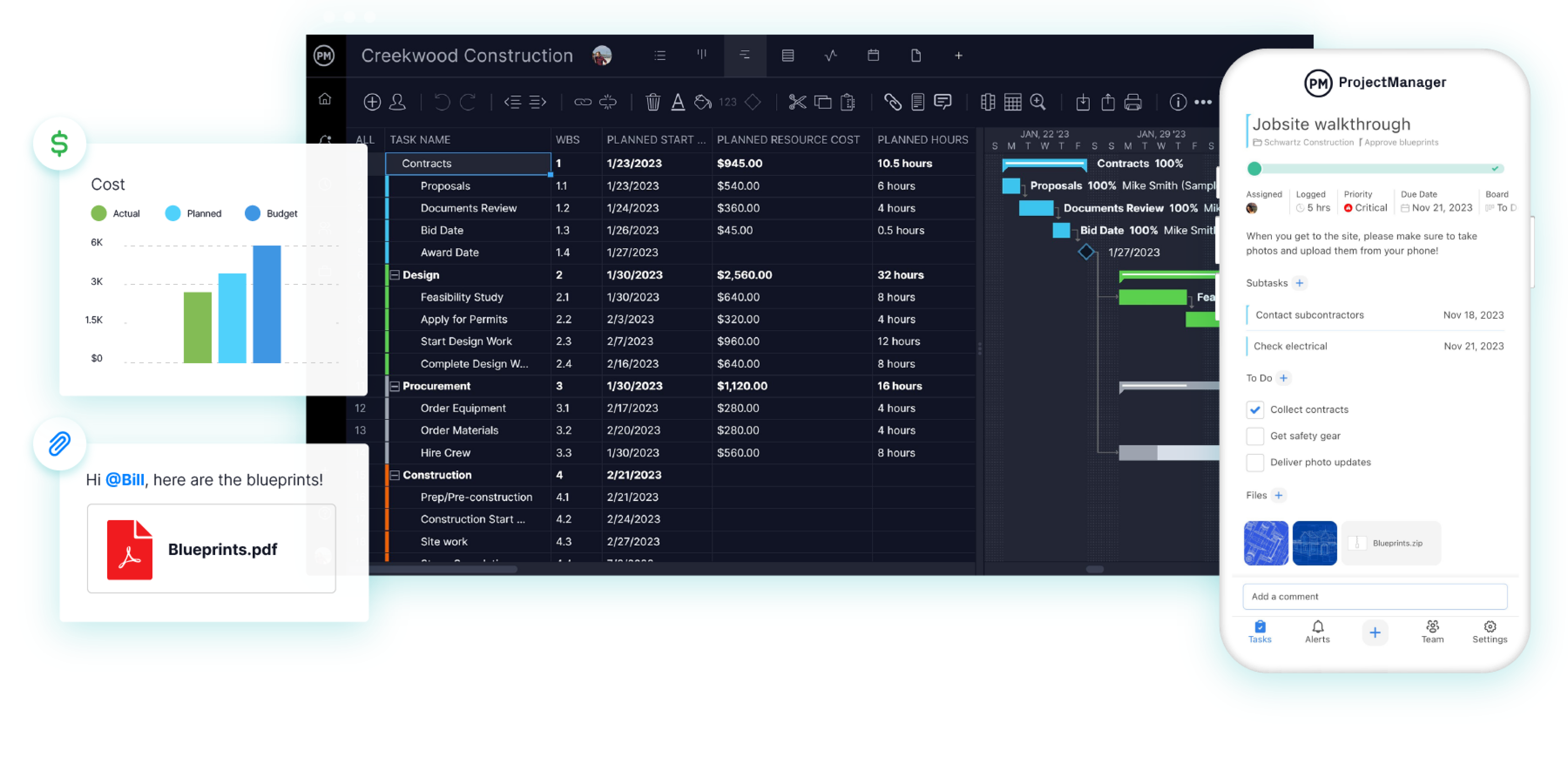Construction Project Management Software: Improve Efficiency and Cooperation
Construction Project Management Software: Improve Efficiency and Cooperation
Blog Article
Customized Building And Construction Management Software Program: Optimizing Source Allocation and Budgeting Methods
In the realm of modern building and construction administration, the significance of tailored software solutions can not be overstated. These innovative tools provide a nuanced technique to enhancing resource allotment and budgeting approaches, essential components for successful job execution. By diving into the complexities of just how such software application can enhance resource allowance techniques and fine-tune budget optimization strategies, a clear path toward enhanced project effectiveness arises. In this electronic age where accuracy and efficiency preponderate, exploring the influence of tailored construction management software program on these important aspects discovers a realm of opportunities that can form the future of the market.
Advantages of Tailored Software Application Solutions
Tailored software program options provide a myriad of benefits to building and construction administration companies seeking to enhance performance and enhance procedures. One crucial advantage is the modification of features to line up with the certain requirements of the building and construction market (construction software). By customizing software services to attend to job monitoring, organizing, budgeting, and source appropriation, companies can maximize their operations and achieve greater productivity. In addition, tailored software application enables smooth integration with existing systems, reducing the need for manual information access and reducing mistakes.
Another benefit of customized software program options is the capability to give real-time understandings and analytics. Building and construction management companies can take advantage of data-driven decision-making to check task development, identify bottlenecks, and make modifications quickly. This positive technique enhances task outcomes and assists firms remain on track with timelines and budgets.

Enhanced Resource Appropriation Methods
Carrying out reliable source allocation approaches is vital for building and construction monitoring firms to enhance job outcomes and maximize productivity. Improved source allowance methods include tactically designating employees, equipment, and materials to certain tasks to make sure optimal use of resources. One key aspect of improved resource allowance is the capacity to precisely anticipate task demands and assign resources as necessary. By leveraging building and construction management software application that supplies real-time tracking and reporting attributes, companies can dynamically change appropriations as job requires evolve, resulting in boosted effectiveness and cost-effectiveness.
Additionally, enhanced resource allowance techniques allow building and construction companies to recognize and address possible bottlenecks or resource restraints proactively. By carrying out routine evaluations of resource use and efficiency metrics, supervisors can make data-driven decisions to redistribute resources efficiently and avoid delays. This proactive approach not just enhances project timelines but likewise lessens the risk of budget plan overruns because of inefficient source allotment.
Budget Optimization Techniques
To attain optimal financial effectiveness in construction tasks, effective budget optimization techniques play a pivotal function in making sure price control and task success. One key strategy is the establishment of a thorough task budget that assigns sources based on concern and vital demands. By incorporating these spending plan optimization strategies into building and construction administration software application, task stakeholders can improve financial planning, resource allowance, and overall budget plan management to drive job success and profitability.

Effect On Job Effectiveness
Optimizing building and construction monitoring software can dramatically boost job efficiency by improving interaction, improving cooperation, and helping with data-driven decision-making. By centralizing job info, stakeholders can easily access real-time updates, lowering hold-ups created by miscommunication or obsolete data. Boosted cooperation attributes allow team members to collaborate seamlessly, despite their physical area, promoting a more cohesive and efficient workplace. Furthermore, construction monitoring software application can supply useful insights through information analytics, enabling job managers to make educated decisions quickly and accurately.
In addition, the automation of regular jobs such as organizing, budget tracking, and source allowance can maximize beneficial time for project groups to concentrate on critical tasks, ultimately accelerating job distribution. The capability to check job development in real-time and determine prospective traffic jams enables aggressive analytic, protecting against issues from intensifying and creating delays. Generally, the impact of tailored building management software application on task efficiency is indisputable, providing a competitive benefit by enhancing process and taking full advantage of performance.
Future Trends in Building And Construction Software Application
As the building market proceeds to advance, developments in technology are forming the future landscape of building and construction software remedies. One significant trend on the perspective is the boosting integration of synthetic intelligence (AI) and equipment knowing capacities in construction software. These technologies have the prospective to reinvent just how building tasks are taken care of by making it possible for construction mangement software predictive analytics, automated decision-making procedures, and enhanced job understandings.
Another future fad in building software application is the expanding focus on cloud-based options. Cloud technology provides enhanced adaptability, scalability, and accessibility for building groups, permitting for real-time cooperation and information sharing throughout task stakeholders. This change towards cloud-based software program is anticipated to enhance job efficiency, streamline interaction, and improve general task end results.
In addition, the surge of Building Info Modeling (BIM) is anticipated to proceed shaping the building and construction software landscape. BIM software helps with 3D modeling, visualization, and information administration, causing improved job coordination, decreased mistakes, and enhanced project end results. Accepting these future fads in construction software will be crucial for business aiming to remain competitive and drive innovation in the industry.
Conclusion
To conclude, tailored building administration software application offers many benefits such as improved resource allocation techniques and budget optimization methods. This software program has a considerable impact on job efficiency by improving procedures and boosting total efficiency (evolve construction). As innovation proceeds to advance, future trends in building and construction software application are expected to more enhance resource allowance and budgeting techniques for building jobs
Report this page